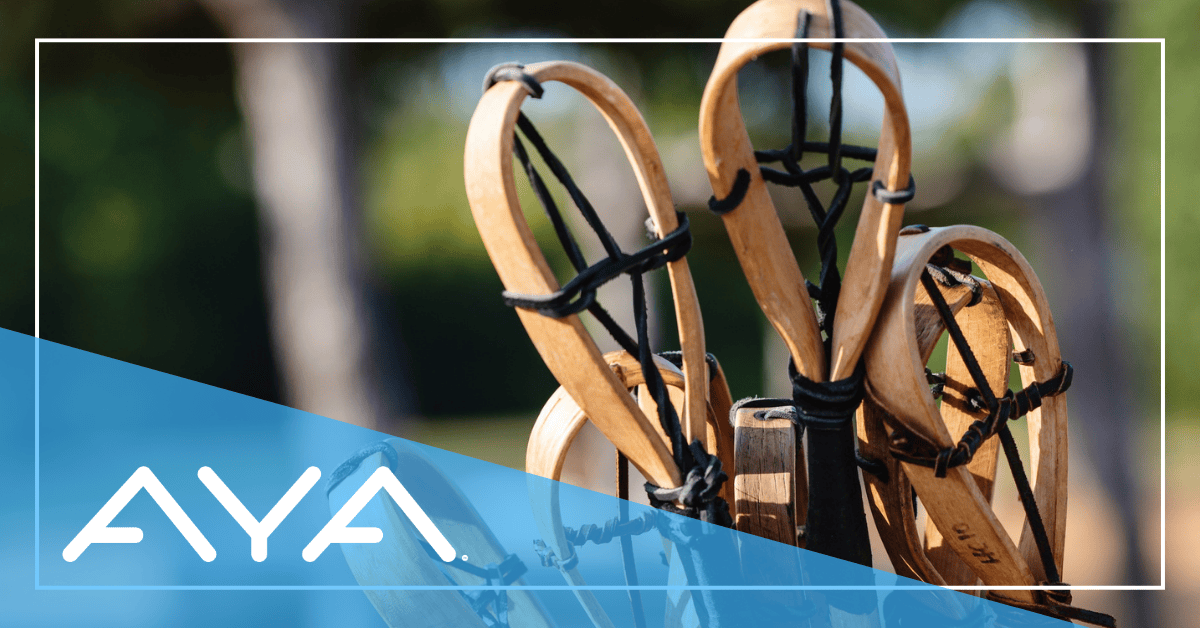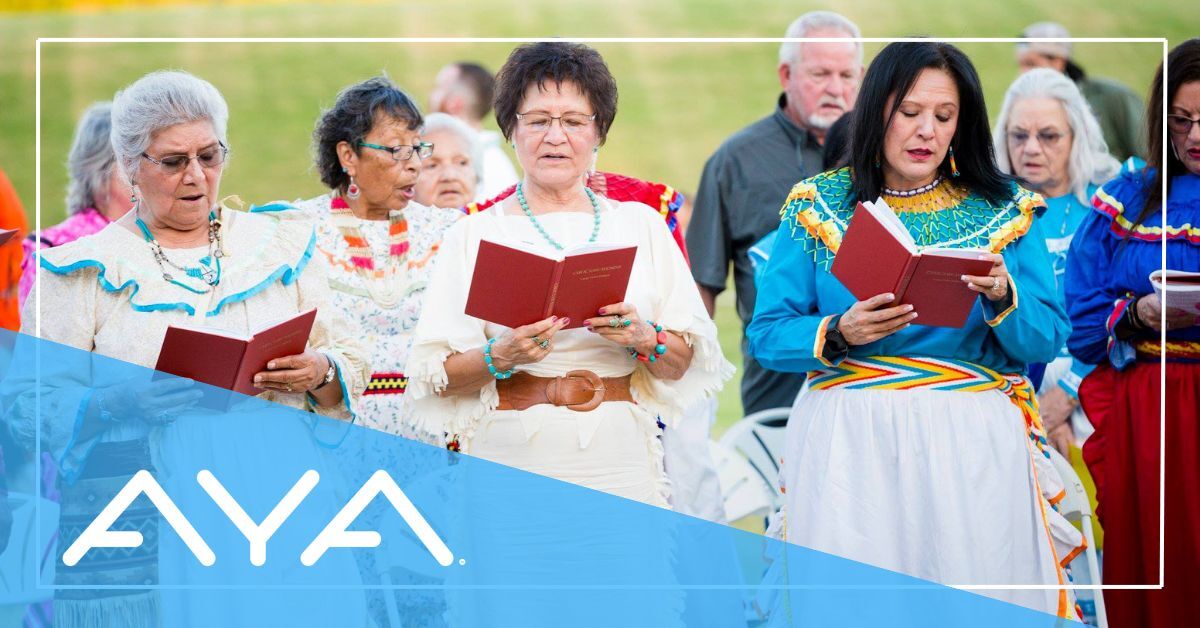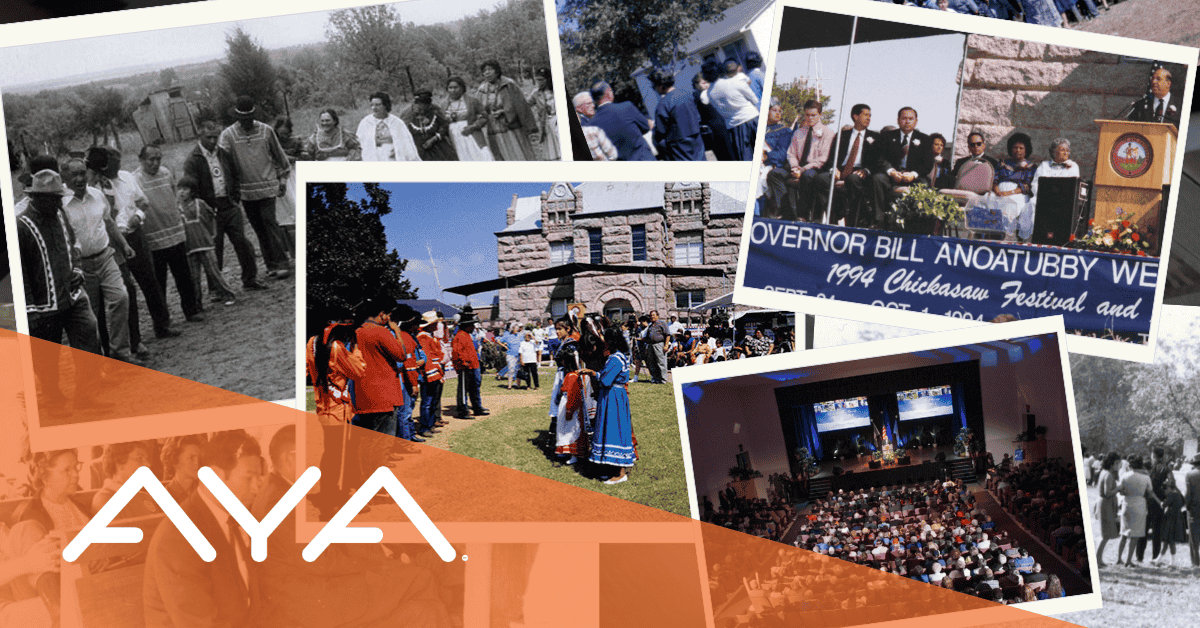Discover Hidden Gems: Exploring AYA's Point of Interest
Imagine walking through your neighborhood and suddenly discovering the hidden stories behind places you pass every day. This is exactly what Points...
4 min read
![]() AYA Walk Team
:
Thu, Jul 31, 2025
AYA Walk Team
:
Thu, Jul 31, 2025

Table of Contents
The traditional sport of Chickasaw stickball, often called the "little brother of war," is far more than a game. For the Chickasaw Nation, stickball remains a powerful expression of cultural identity, physical endurance and generational connection.
Once used to resolve disputes, build community alliances and prepare warriors for battle, stickball is steeped in ceremony and intensity. It is a physically demanding game with spiritual roots that date back centuries. Traditionally, Chickasaw warriors trained for battle through the rigors of stickball, a sport marked by rugged contact, fierce teamwork and unwavering resolve.
Today, stickball continues to evolve while retaining its spiritual and cultural depth. Modern Chickasaw teams like Chikasha Toli blend tradition with contemporary athleticism, representing the enduring warrior spirit of the Chickasaw people.
Ashley Wallace, a respected player and coach, reflects on the meaning behind her participation. “I love the honor it brings to be physically able to continue our traditional game,” she says. “It teaches hard work, perseverance and a healthier lifestyle.”
Stickball is a tool for personal growth and family wellness. Wallace emphasizes how the game motivates her to stay active and committed to her health. As a women’s and youth coach, she finds joy in watching others grow through cultural connection, noting how the sport draws families together and strengthens the community.
For Gabe Cannon, a player on Chikasha Toli, stickball is a life-shaping force. “Stickball is a very active game. There is a lot of movement involved on a large field,” he said. “Being a member of Chikasha Toli has not only made me a more active person but also given me the motivation to push harder.”
Stickball pushes players to their limits. Games are fast-paced and physically intense, especially in the final moments. For Cannon, those difficult fourth quarters are when character shines through. “It really feels like you have nothing left. When that time comes, I just look around and see my teammates giving everything they have. That is what allows me to dig deep and find the warrior within.”
That warrior ethos is central to Chikasha Toli’s identity. The team serves as a cultural ambassador on and off the field, honoring centuries of Chickasaw tradition with every match played.
“Stickball has connected me to the generations of Chickasaws that came before me,” Cannon shares. “It brings me tremendous honor to play a warrior’s game, and I hope one day I can bring honor to the generations that come after.”
Stickball is more than a sport. It bridges the gap between past and present, youth and elders, culture and wellness. For Chickasaw players and fans, the game fosters a sense of belonging and identity.
“Stickball gives me a sense of belonging,” Cannon reflects. “There is no better feeling than playing with your brothers under the lights, knowing they have your back and you have theirs.”
Every game becomes a platform to pass down language, values and cultural teachings. Through this tradition, Chickasaw players model unity, discipline and resilience, keeping heritage alive for future generations.
The traditional demands of stickball – endurance, agility and strength – parallel the Chickasaw commitment to wellness. It is not just about winning a game. It is about living a healthier, more intentional life.
Ashley Wallace emphasizes this connection. Stickball motivates her to meet fitness goals, including step counts and daily activity. The sport embodies the values of discipline, perseverance and balance: values just as vital in today’s world as they were for our warrior ancestors.
Not everyone will step onto a stickball field, but everyone can take part in the Chickasaw story.
AYA Walk, a mobile walking app developed by the Chickasaw Nation, encourages citizens of all ages to stay active and engaged with their history. AYA uses virtual walking trails to tell the stories of Chickasaw ancestors. Through characters like Solomon, Akanowa and Mah Wah Ta, users learn about the cultural significance of stickball and the strength of the Chickasaw people.
AYA’s message is clear: movement is our story. Walking today in honor of their endurance becomes a symbolic step forward in reclaiming wellness, identity and cultural pride.
Stickball keeps the culture of the Chickasaw Nation alive. Through this ancient Indigenous sport, players carry the strength, discipline and honor of their ancestors onto the modern field. Teams like Chikasha Toli are not just athletes. They are cultural carriers who embody the values passed down through generations of Chickasaw warriors.
Cultural activities like stickball thrive in today’s world because of players like Gabe Cannon and Ashley Wallace, who honor this tradition with every throw, pass and collision. Their stories show how stickball connects physical activity with identity, family and intergenerational healing.
“Stickball gives me a sense of belonging,” Cannon says.
Wallace adds that it “brings families and our community together” and teaches lessons of “hard work, perseverance and a healthier lifestyle.”
Even if you do not play stickball, you can still be part of the story. Stickball is not just for athletes – it is for everyone who wants to connect to Chickasaw heritage, wellness and community.
The AYA Walk app invites you to experience Chickasaw culture through walking. Three of its virtual walking partners – Solomon, Akanowa and Mah Wah Ta – share stories of stickball from their lifetimes. As you follow their footsteps, you learn how the sport shaped Chickasaw life, promoted unity and reflected the endurance required to preserve identity through hardship.
These walking routes are more than just trails. They are immersive cultural journeys that honor Chickasaw history through movement. AYA makes it possible for users to explore the connection between Chickasaw stickball, community pride and personal health one step at a time.
“Walking is movement, and movement is what our history displays,” the AYA Walk team explains. “We moved with purpose then, and we can move with purpose now.”
Whether you are walking for wellness, learning through curiosity or preparing for your own stickball journey, AYA Walk helps bridge the past and the present through active cultural engagement.
Anowa chipisala'cho (until we meet again),
- The AYA Walk Team
The AYA Walk App is a one-of-a-kind step counter that offers an exciting way to discover captivating narratives as you go about your daily routine.
The word "AYA" originates from the Chickasaw language and signifies "to go; to journey." As you take steps towards improving your fitness, AYA Walk accompanies you on this adventure, guiding you through time and unlocking stories from the past.
Along the way, you will stumble upon hidden treasures rooted in Chickasaw heritage, discover historical paths that unveil the secrets of the past, and have the chance to listen to stories about significant cultural landmarks.
AYA Walk celebrates more than just physical well-being; it also fosters a renewed connection to a healthier lifestyle. By engaging with this innovative step tracker, you'll improve your fitness and gain a deeper appreciation for the stories surrounding us.
Download AYA Walk today!

Imagine walking through your neighborhood and suddenly discovering the hidden stories behind places you pass every day. This is exactly what Points...

The story of shared language, faith and cultural preservation through sacred music.

Ever wondered how the Chickasaw Annual Meeting and Festival became such an important tradition? It is a story of resilience, unity and pride. In...